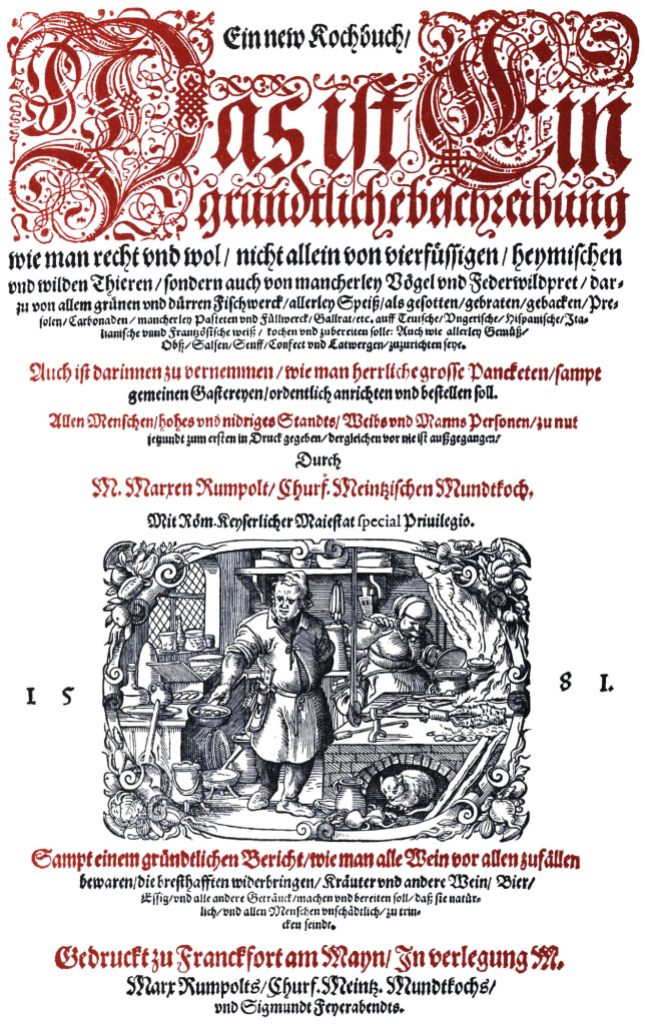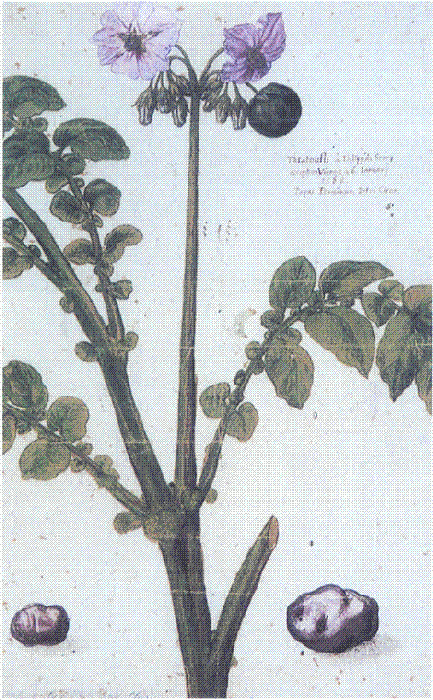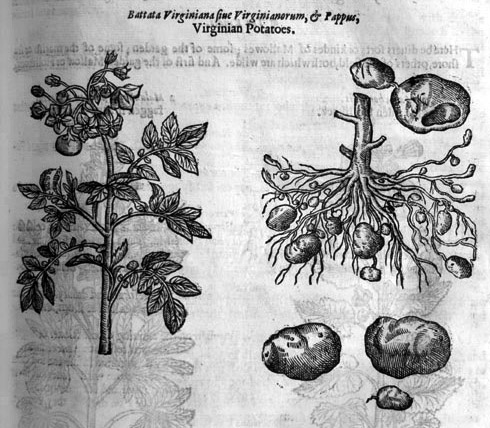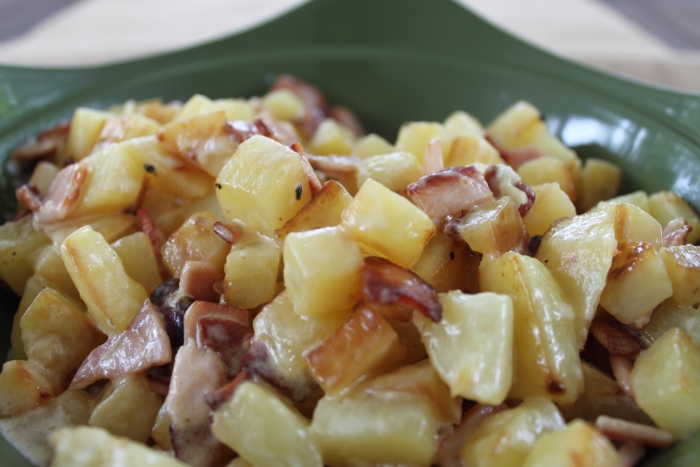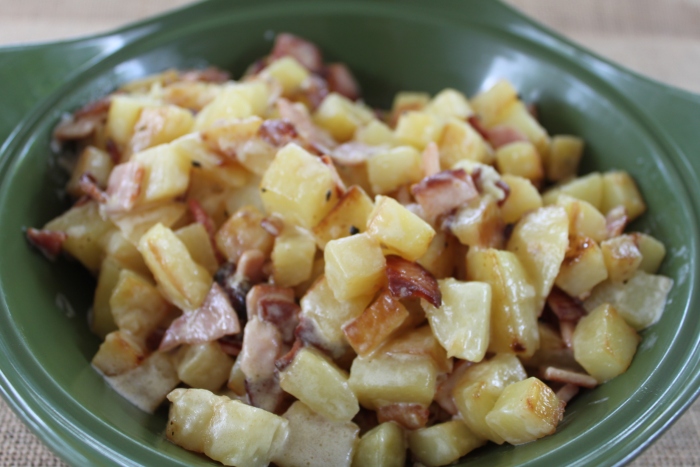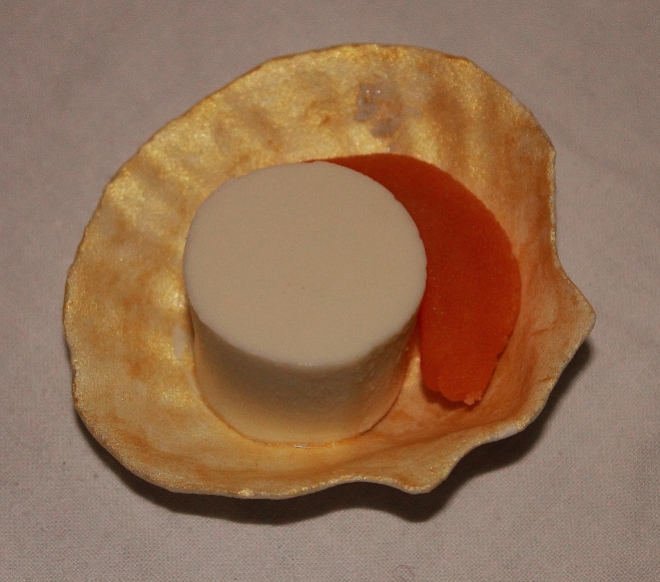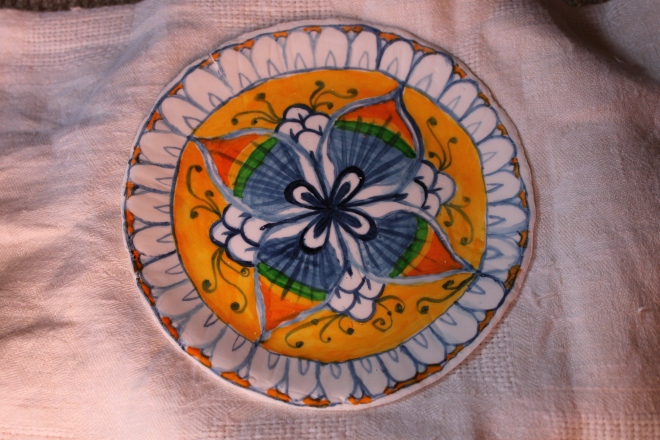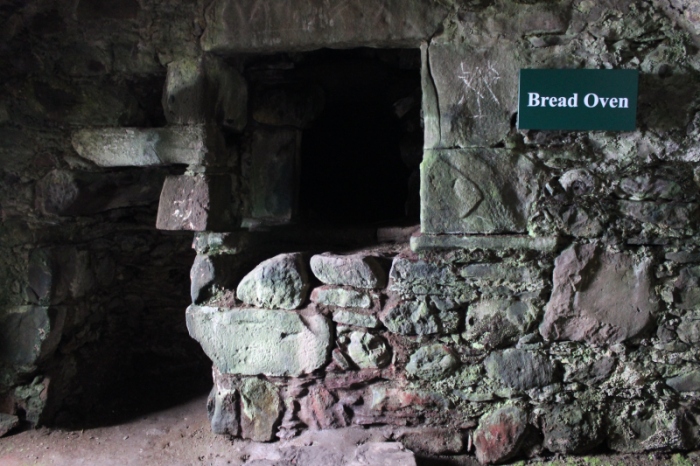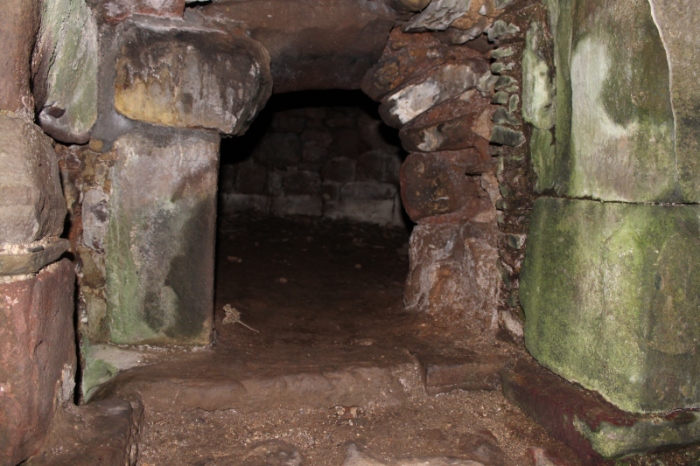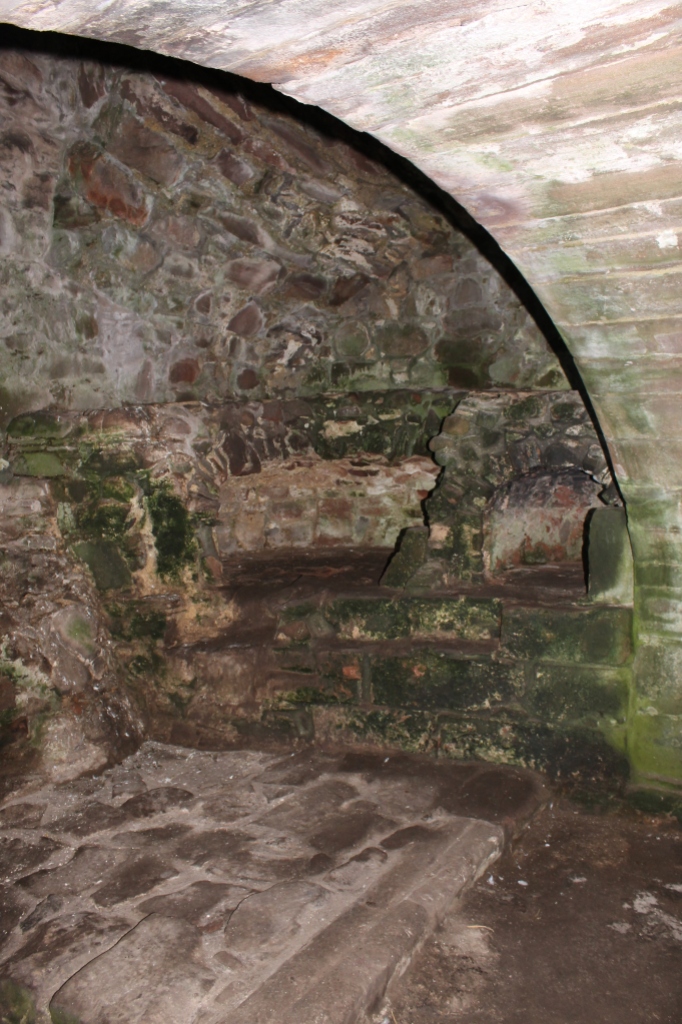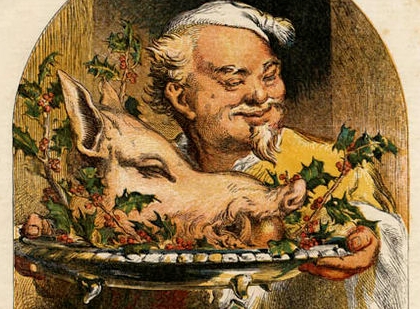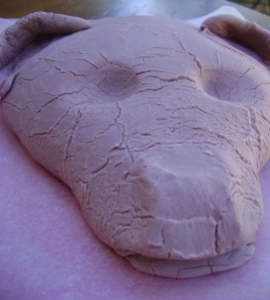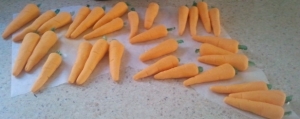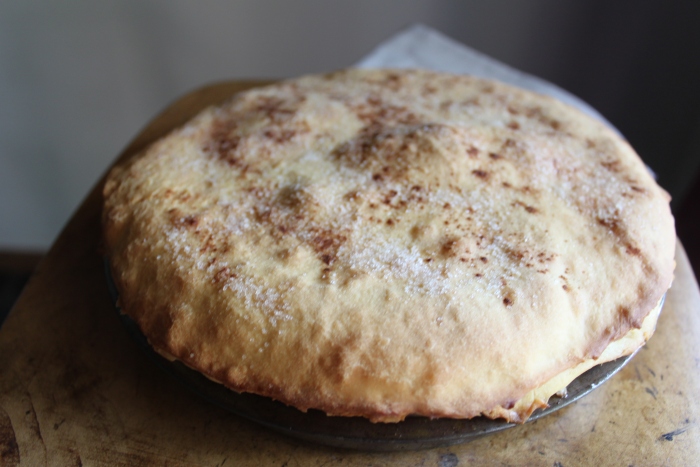
If you have ever looked at historical food boards on Pinterest (and since you are reading this I would guess that you probably have) then you’ve probably seen Chelsea Monroe-Cassel’s Medieval Peach Crostata. Published on her Game of Thrones food blog Inn at the Crossroads, this dessert looks like a cross between a sweet pizza and a strudel. How could I resist making that?
That being said, I went back to Bartolomeo Scappi’s instructions and my interpretation of the final product is quite different. Scappi was a papal chef, writing in the 1560s, and his cookbook was published in 1570. Although Scappi is better than many of hist contemporaries at providing quantities and instructions, the recipes are still very hard to follow.
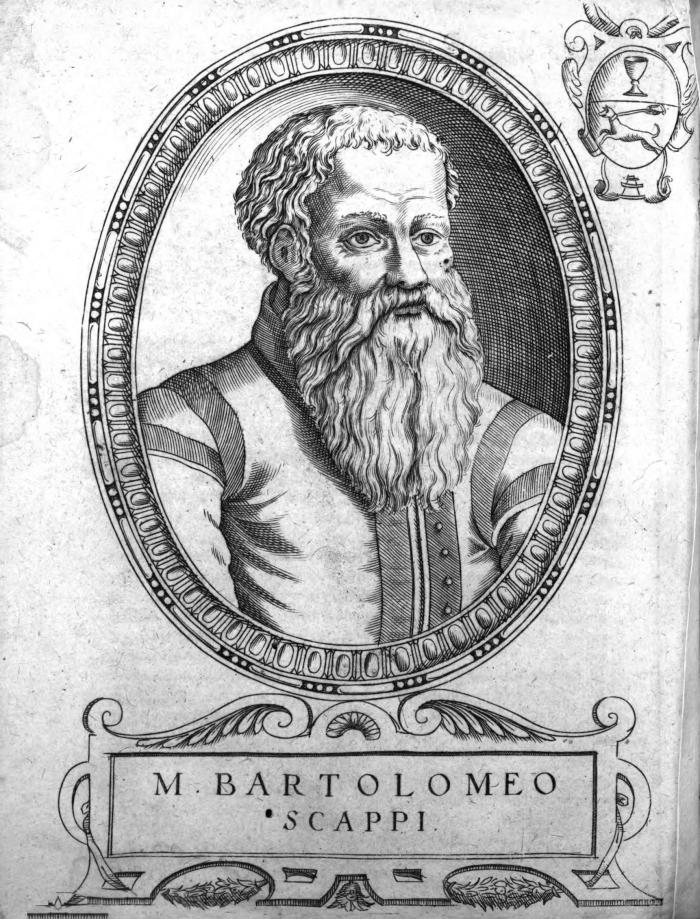
Frontispiece from The Opera of Bartolomeo Scappi, [public domain], via Wikimedia Commons.
Please note that, like the Metternich cake, this recipe is not for the faint of heart. The crostata is made of up three sheets of pastry as the base, a pastry twist filled with dried fruit cooked in wine and spices which makes the side of the tart, then there are several layers of filling and then three more layers of pastry for the top. It contains copious amounts of butter and sugar, and took more than three hours of continuous work. You have been warned!
“63. To prepare a peach, apricot or plum crostata
Get a peach that is not too ripe; if it is hard it will do quite a bit better than if not. Peel it and cut it into slices. Have a tourte pan ready, lined with its three sheets of dough and its twist around it, greased with butter or rendered fat, and sprinkled with pepper, cloves, cinnamon, nutmeg and sugar, and with raisins and crumbled Neapolitan mostaccioli. On all that set out the peach slices and on top of them put the same ingredients as are under them. Cover the pan over with three thin sheets of dough, with rendered fat or butter brushed between each; sprinkle that with sugar and cinnamon. Bake it in an oven or braise it; it does not take too much cooking because it would disintegrate into a broth. Serve it hot, dressed with sugar and rosewater.
With those ingredients you can also add in provatura or grated cheese.”[1]
The first step is to make the mostaccioli, which are a kind of biscotti. The recipe that I chose was made from bread which is toasted and then ground into flour. The breadcrumb flour is mixed with flour, sugar, eggs, yeast, rosewater and anise to make a thick batter and left to rest. You then add more eggs and some salt and allow it to rest again. The mixture is then poured into a pan, baked, sliced into rectangles and baked again. Next time I would leave the biscuits to cook longer both times, and I would probably slice them more thinly too because they were a bit too gummy to really crumble.
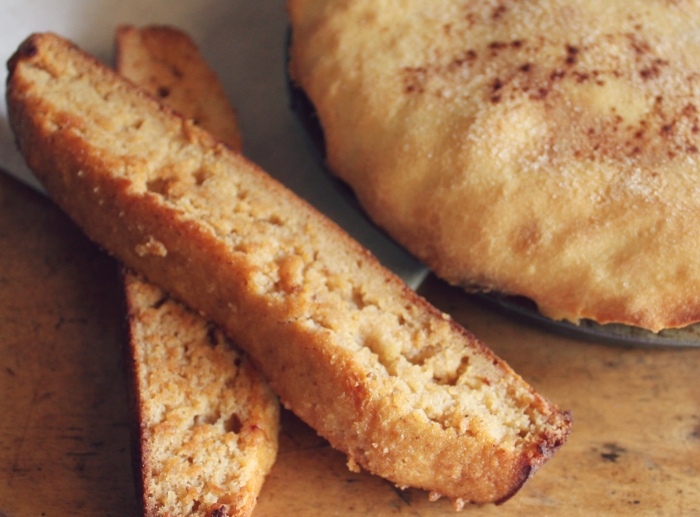
“237. To prepare dainty biscuit morsels. (Morseletti or mostaccioli)
Get two pounds of white breadcrumb and bake it a second time. Grind it in a mortar and put it through a sieve so it becomes like flour. For every pound of that sieved substance, add as much again of fine flour, two and a half pounds of finely sieved sugar and four ounces of leaven ground in a mortar and moistened with fifteen fresh eggs; then everything should be mixed together with three-quarters of an ounce of raw anise ground into powder and four ounces of rosewater. When everything is thoroughly mixed and beaten together so that it looks like fritter batter, let it sit for two hours in a warm place. Beat it again, adding in four more eggs and an ounce of salt; then let it sit for another hour. Then have a buttered tourte pan and put the filling into it so it is a finger’s width in depth. Put that into an oven that is not too hot. Leave it there until it is dry. Remove it and with a sharp knife cut it into little long rectangles, as wide or narrow as you like. Just as soon as they have been cut up, put them immediately into marzipan tourte pans, set out apart with paper under them, and put them back into the oven with a very moderate heat. Leave them there for half an hour, turning them several times until they have firmed up. In order to keep them white, keep them covered with rag paper.”[2]
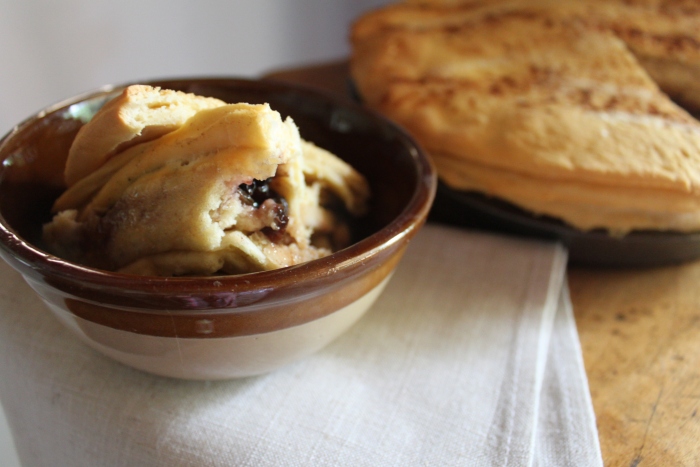
So far so good, but this is where it gets a bit complicated. The recipe tells us that we need a tourte pan lined with three sheets of dough and a twist, but not how to do this. For detailed instructions we need to go to an earlier recipe for a crostata of cow’s udder.
“49. To prepare various sorts of crostate which Neapolitans call coppi and Lumbards napoleons, beginning with a cow’s udder.
When the udder has been boiled in salted water, so that it is thoroughly cooked, take it out and let it cool. Cut it into very thin slices. With that put the same amount of boiled, desalted sowbelly and slices of fresh provatura. Have a tourte pan ready, greased with rendered fat or butter, with a rather thick sheet of dough made with fine flour, rosewater, egg yolks, butter and salt. On that sheet of dough put two other thin ones greased with rendered fat or butter, and sprinkle them with sugar. Make the twist of flaky pastry all around and not very big. On the last sheet of dough set a layer of slices of provatura sprinkled with sugar, cinnamon and raisins, and beaten mint and marjoram; on that layer put little lumps of butter and some of the udder slices and of the sowbelly; continue doing the same up to three layers, covering the last with another sheet of somewhat thinner dough. On that sheet put some strips of flaky pastry, slitting the twist all around with the tip of a hot knife. Carefully, with a greased hand, put waves into the flaky pastry or else cut it into lacework with a knife. Put it into an oven and bake it, making sure to grease the flaky pastry with rendered fat or melted butter so it will puff up better. When it is done serve it hot…”[3]
This explains that the dough is made from flour, rosewater, egg yolks, butter and salt but gives no quantities. For that, we need to turn to another recipe again. The instructions for making a filled twist give the quantities: two pounds of flour, six egg yolks, two ounces of rosewater, an ounce of leaven moistened with warm water, four ounces butter and enough salt. Even though I didn’t knead the dough for the full half an hour I was amazed at how well this dough worked. It was smooth, silky and could be rolled out very thinly.
“122. To prepare a filled twist.
Make a dough of two pounds of fine flour with six fresh egg yolks, two ounces of rosewater, an ounce of leaven moistened with warm water, four ounces of either fresh butter or rendered fat that does not smell bad, and enough salt. That dough should be kneaded well for half an hour. Make a thin sheet of it, greasing it with either melted butter that is not too hot or with rendered fat. With the pastry wheel cut the edges one after the other, which are always thicker than the rest. Sprinkle the dough with four ounces of sugar and an ounce of cinnamon. Then get a pound of currants that have been brought to a boil in wine, a pound of dates cooked in that wine and cut up small, and a pound of seeded muscatel raisins that have been brought to a boil in wine; combine all those ingredients and mix them with sugar, cinnamon, cloves and nutmeg. Spread that mixture out over the sheet of dough along with a few little gobs of butter. Beginning at the long edge of the dough, roll it up like a wafer cornet, being careful not to break the dough. A twist like that only needs three rolls so it can cook well; it should not be too tight. Grease its surface with melted butter that is not too hot. Begin at one end to roll it up, not too tightly, so it becomes like a snail shell or a maze. Have a tourte pan on hand lined with a rather thick sheet of the same dough greased with melted butter and gently put the twist on it without pushing it down. Bake it in an oven or braise it with a moderate heat, not forgetting to grease it occasionally with melted butter. When it is almost done, sprinkle sugar and rosewater over it. Serve it hot. The tourte pan in which the twists are baked has to be ample and with low sides.”[4]
To line the tourte pan (I used a shallow, Victoria sponge cake tin) you place three circles of dough (the bottom one should be slightly thicker) in the base, brushing each with melted butter. The way that I read the recipe, these circles are the same size as the base of the pan, they do not come up the sides of the pan as in a modern pie recipe. The sides are formed with a twist. The twist is made by rolling out a long, thin sheet of the same dough and rolling this up around a filling of dried fruit cooked in wine and spices. This twist is laid around the edge of the tin and forms the sides of the crostata.
With the base now in place, the filling comes next. The base is sprinkled with spices, dried fruit, sugar and the crumbled mostaccioli from earlier. This is followed by a layer of sliced peaches and topped with more spices, sugar, fruit and biscuits. This is then topped with another three layers of pastry and then cooked in a moderate oven.
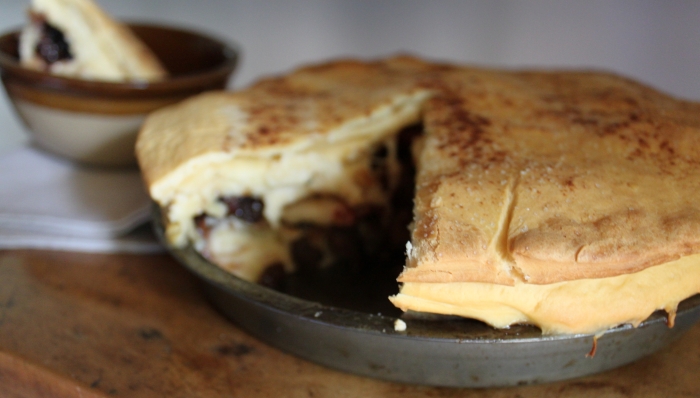
The Redactions
Mostaccioli
180g bread, cut into slices and with the crusts removed
100g flour
250g sugar
5 eggs
7g of dried yeast (fresh yeast, ale barm or sourdough starter would be even better)
25ml rosewater
(anise if desired)
Salt
- Heat the oven to 150˚C. Place the bread slices on baking trays and toast lightly in the oven until golden and very dry, but be careful not to burn them.
- Crumble the toasted bread with your fingers, then take small amounts and grind it to a powder in a mortar and pestle. Sieve this powder to remove any bigger pieces and weigh the amount that you have. The quantities given in this recipe are for 100g of breadcrumb flour.
- Take the flour and mix it with 250g of sugar, 4 eggs and the yeast. Beat to combine, then add the anise and the rosewater. Leave to rest for two hours in a warm place.
- Beat the last egg and some salt into the mixture. Let rest for another hour.
- Pre-heat the oven to 150˚C and grease a square cake tin or a slice tin. Pour the mixture into the tin, it should be about 1 cm deep, and bake in the oven for about 30 mins, or until a skewer comes out clean.
- Allow the cake to cool slightly, then remove from the tin. Slice the cake into rectangles and lay them on their sides on a baking tray lined with baking paper. Return the biscuits to the oven for another 40 minutes or until hard and dry. When done, allow to cool completely.
Peach Crostata
Dough:
450g flour
Pinch of salt
56g cold butter, cut into cubes
3 egg yolks
30ml rosewater
7g dried yeast, dissolved in 15 ml of warm water
Filling:
Sugar
A handful of raisins
Ground pepper, cloves, cinnamon and nutmeg
4 mostaccioli, crumbled
1 hard peach, sliced
Filling for the twist:
55g sugar
225g currants, raisins and/or chopped dates
1/4 cup red wine
Ground cinnamon, cloves and nutmeg to taste
Melted butter, to grease
- To make the dough place the flour and some salt in a large mixing bowl. Rub in the butter with your fingertips until it is the consistency of breadcrumbs. Add the egg yolks, rosewater and the yeast. If it seems to dry add a little more water. Bring together and knead for at least 10 mins (or you can go for the full 30 mins if you are using a stand mixer with a dough hook).
- To make the filling for the twist, place the dried fruit, red wine, 1 tsp of sugar and spices to taste in a small saucepan and bring to a simmer. Allow to cook for 5-10 mins or until plump and slightly softened. Drain the fruit from the juice and allow to cool.
- For the base of the crostata take 1/3 of the dough. Break this into three parts, with one slightly larger than the other two. Begin with the larger piece and roll it out to the size of the base of your tourte pan. Use the base of the pan to cut out the circle of dough. Place the circle in the base of the greased pan, and brush the dough with melted butter. Repeat this twice more with the other two pieces of dough (they should be slighlty thinner than the first layer).
- For the twist, measure the circumference of your tourte pan. Take half the remaining dough and roll it out very thinly into a rectangle that is the same length as the circumference of your pan, and about 6 cm wide. Brush the dough with melted butter and sprinkle with the remaining sugar and some ground cinnamon.
- Spread the fruit mixture over the rectangle of dough, leaving 1 cm of space at the edges. Starting at one of the long sides, gently roll up the dough. It should not be too tight, and be careful that the dough doesn’t tear. Place the rolled up twist around the outside edge of your tourte pan, pinching the short ends together to form one continuous ring.
- Brush the twist and the base with melted butter. Sprinkle on some sugar, raisins, spices and 2 mostaccioli. On top of this layer place the sliced peach, then top with more sugar, raisins, spices and the remaining crumbled biscuits.
- Preheat the oven to 180˚C. Take the last 1/3 of the dough and break it into three equal pieces. Roll the first one out thinly until it will cover the crostata. Place over the top of the filling and run a knife around the edge of the pan to remove the scraps. Brush with butter and repeat twice more with the other two balls of dough. Brush the final layer with butter and sprinkle with sugar and cinnamon.
- Place the crostata in the oven and cook until the pastry is golden. Do not leave it too long of the juice from the peaches will dissolve the pastry. Serve hot.
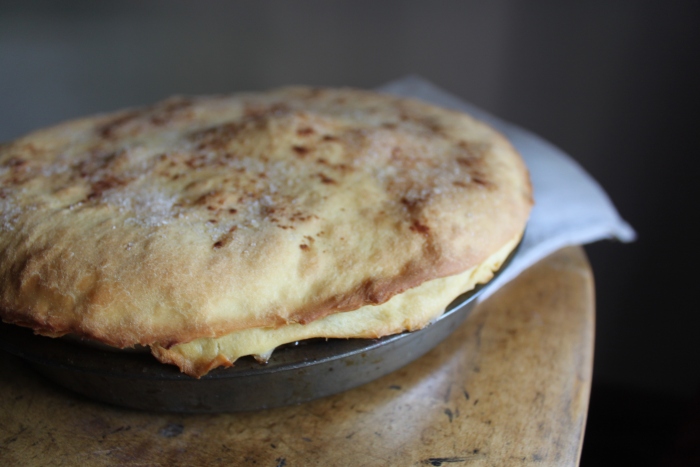
The Round-Up
The Recipe: To prepare a peach, apricot or plum crostata, from The Opera of Bartolomeo Scappi
The Date: 1570
How did you make it? See above.
Time to complete?: 3 hours + time for making the mostaccioli
How successful was it?: It had a nice combination of flavours, but was a bit on the heavy side. I think that is to be expected with so many layers of a yeasted pastry, but overall I was quite happy with the way that the pastry performed. I didn’t really expect it to work! The peaches have a tendency to make the bottom rather soggy, so it’s best to use fruit that isn’t too ripe.
How accurate?: I think that it is probably closer to the original recipe than some other versions, but the recipes are so ambiguous about the way in which the twist is formed in particular that it’s hard to know what they mean.
[1] Scappi, The Opera of Bartolomeo Scappi (1570), 466.
[2] Ibid., 533–534.
[3] Ibid., 459–460.
[4] Ibid., 488–489.
Bibliography
Scappi, Bartolomeo. The Opera of Bartolomeo Scappi (1570). Edited by Luigi Ballerini and Massimo Ciavolella. Translated by Terence Scully. Toronto: University of Toronto Press, 2008.
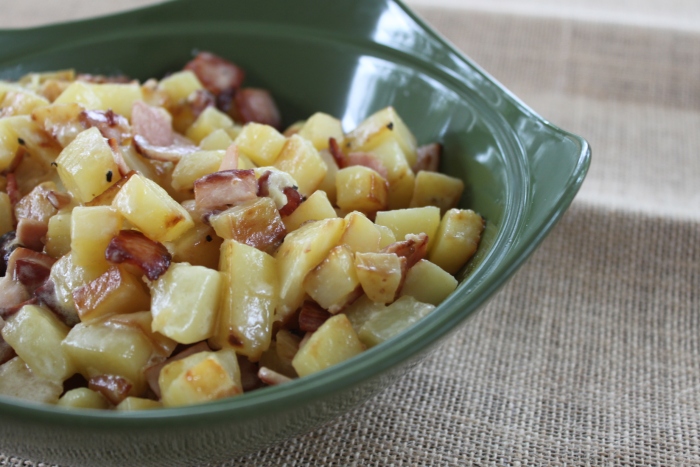 It’s a new year, and a new round of Historical Food Fortnightly Challenges (and of course I’m already running late!). If you missed the last one, the HFF is a series of themed challenges where you choose a historical recipe (from before 1960) and follow it as closely as you can. Of course it’s not possible to be completely accurate, modern cooks have budget constraints, modern (for the most part) kitchens, and some ingredients are impossible to find, but we do our best. If you want to find out more about the challenge, the challengers or the different themes then head to the
It’s a new year, and a new round of Historical Food Fortnightly Challenges (and of course I’m already running late!). If you missed the last one, the HFF is a series of themed challenges where you choose a historical recipe (from before 1960) and follow it as closely as you can. Of course it’s not possible to be completely accurate, modern cooks have budget constraints, modern (for the most part) kitchens, and some ingredients are impossible to find, but we do our best. If you want to find out more about the challenge, the challengers or the different themes then head to the 